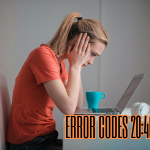Introduction: In the realm of programming, semantic error chapter 80 is a notorious nemesis that often leaves developers scratching their heads in bewilderment. Despite its elusive nature, understanding semantic error chapter 80 is crucial for writing robust and error-free code. In this comprehensive guide, we’ll embark on a journey to demystify semantic error chapter 80, exploring its nuances, common pitfalls, and best practices to mitigate its impact.
Exploring the Fundamentals
Deciphering Semantic Error Chapter 80
Semantic error chapter 80, also known as a logic error, occurs when there is a flaw in the logic of a program that produces unexpected or incorrect results. Unlike syntax errors, which are caught by the compiler, semantic errors manifest during runtime, making them trickier to detect and troubleshoot.
In essence, semantic error chapter 80 arises from discrepancies between the intended behavior of the code and its actual execution. This can stem from flawed algorithms, incorrect assumptions, or faulty logical reasoning within the program. You may also like to see this important figure here Unveiling the Success Story of Justin Billingsley in Connecticut: A Journey of Inspiration.
To illustrate, consider a banking application that deducts a withdrawal amount from an account balance but fails to account for overdraft limits. While the code may execute without syntax errors, the logic flaw results in unintended consequences, such as allowing overdrafts beyond the specified limit.
Common Causes of Semantic Error Chapter 80
Misunderstanding Requirements
Misinterpreting the requirements or failing to grasp the underlying problem can lead to semantic error chapter 80. It’s imperative to thoroughly analyze the specifications and clarify any ambiguities before writing code.
Inadequate Testing
Insufficient testing or overlooking edge cases can exacerbate semantic error chapter 80. Rigorous testing, including boundary testing and scenario-based testing, is essential to uncover hidden logic errors.
Complex Control Flow
Complex control flow structures, such as nested loops or conditional statements, increase the likelihood of semantic error chapter 80. Simplifying code complexity and modularizing functions can mitigate this risk.
Strategies for Prevention and Resolution
Adopting Defensive Programming Techniques
Leveraging Debugging Tools and Techniques
FAQ’s (Frequently Asked Questions)
How can I differentiate between syntax errors and semantic errors?
Syntax errors occur during the compilation phase of programming when there is a violation of the language rules, while semantic errors manifest during runtime due to logical flaws in the code’s execution. Syntax errors are typically caught by the compiler, whereas semantic errors are trickier to detect and often require thorough testing and debugging.
What role does proper documentation play in reducing semantic error chapter 80?
Proper documentation serves as a roadmap for understanding the codebase, including its requirements, design decisions, and expected behavior. By documenting the logic and functionality of the code, developers can minimize misunderstandings and reduce the likelihood of semantic error chapter 80. Clear documentation also aids in troubleshooting and maintaining the codebase in the long run.
Is there a foolproof method for identifying logic errors in my code?
While there’s no foolproof method for identifying logic errors, adopting best practices such as modular design, code reviews, and thorough testing can help uncover and mitigate logic flaws. Additionally, leveraging debugging tools and techniques, such as breakpoints, logging, and unit testing, can assist in isolating and resolving semantic error chapter 80.
Can code reviews help uncover potential semantic errors?
Yes, code reviews play a crucial role in identifying potential semantic errors by leveraging the collective knowledge and expertise of the development team. Through peer review, developers can spot logic flaws, suggest improvements, and ensure adherence to coding standards and best practices. Code reviews also promote knowledge sharing and foster collaboration within the team.
Are there any automated tools available for detecting semantic error chapter 80?
Yes, there are several automated tools and static code analysis tools available that can help detect semantic errors and other code quality issues. These tools analyze the codebase for potential logic flaws, dead code, code smells, and other anomalies, providing developers with actionable insights to improve code quality and reliability. Some popular examples include SonarQube, ESLint, and PyLint.
How can I enhance my problem-solving skills to mitigate logic errors?
Enhancing problem-solving skills involves practice, experimentation, and continuous learning. By actively engaging in coding challenges, tackling real-world problems, and seeking feedback from peers and mentors, developers can sharpen their analytical abilities and hone their intuition for identifying and resolving logic errors. Additionally, studying algorithms, data structures, and design patterns can provide valuable insights into effective problem-solving strategies.
Conclusion
In conclusion, mastering semantic error chapter 80 is a formidable yet essential endeavor for every programmer. By understanding its root causes, adopting preventive measures, and leveraging debugging techniques, developers can minimize the impact of logic errors and write more reliable and robust code.
Remember, while semantic error chapter 80 may seem daunting at first, with perseverance and practice, you can overcome its challenges and emerge as a more proficient programmer.



